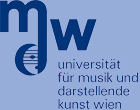Timbre synthesis and perception (Chr. Reuter)

In this session, model representations of timbre perception and synthesis will be discussed. The focus will be particularly on questions (that perhaps might help to fill or bridge some gaps) such as: What timbre cues entail what kind of instrument recognition (from a music-psychological perspective) accompanied with what kind of cortical representation (from a neuronal perspective)? How can synthesis techniques like physical modeling or pulse forming help us to deepen our knowledge about timbre genesis in real instruments? What are the instruments and synthesis techniques in the first part of the 20th century that are more or less entirely unknown to Western researchers? How is it possible to extract individual acoustical events (as noises, instruments or similar) from a complex auditory scene with the help of mathematics?

| Andermann; Martin: (Invited) / P | 'THE NEUROMAGNETIC REPRESENTATION OF THE SCALE OF INSTRUMENTAL TONES IN HUMAN AUDITORY CORTEX' |
| Davidenkova; Ekaterina: (Invited) / O | 'HISTORY OF ELECTRO-MUSICAL INSTRUMENTS IN RUSSIA, FIRST HALF OF 20TH CENTURY' |
| Dörfler; Monika: (Invited) / O | 'DESCRIBING AND CLASSIFYING TIMBRE IN THE TIME-FREQUENCY DOMAIN' |
| Fricke; Jobst P.: (Invited) / O | 'NEUROBIOLOGICAL STATISTICS FOR INTERPRETING PROBLEMS OF MUSICAL CONSONANCE PERCEPTION' |
| Oehler; Michael: (Invited) / O | 'THE INFLUENCE OF FORMANTS AND NOISE PARTS ON THE PERCEIVED TYPICALITY OF WOODWIND SOUNDS' |
| Rupp; Andre: (Invited) / O | 'NEUROMAGNETIC REPRESENTATION OF WOODWIND INSTRUMENTS' |
| Siddiq; Sadjad: (Invited) / P | 'PHYSICAL MODELLING OF THE SITAR' |






